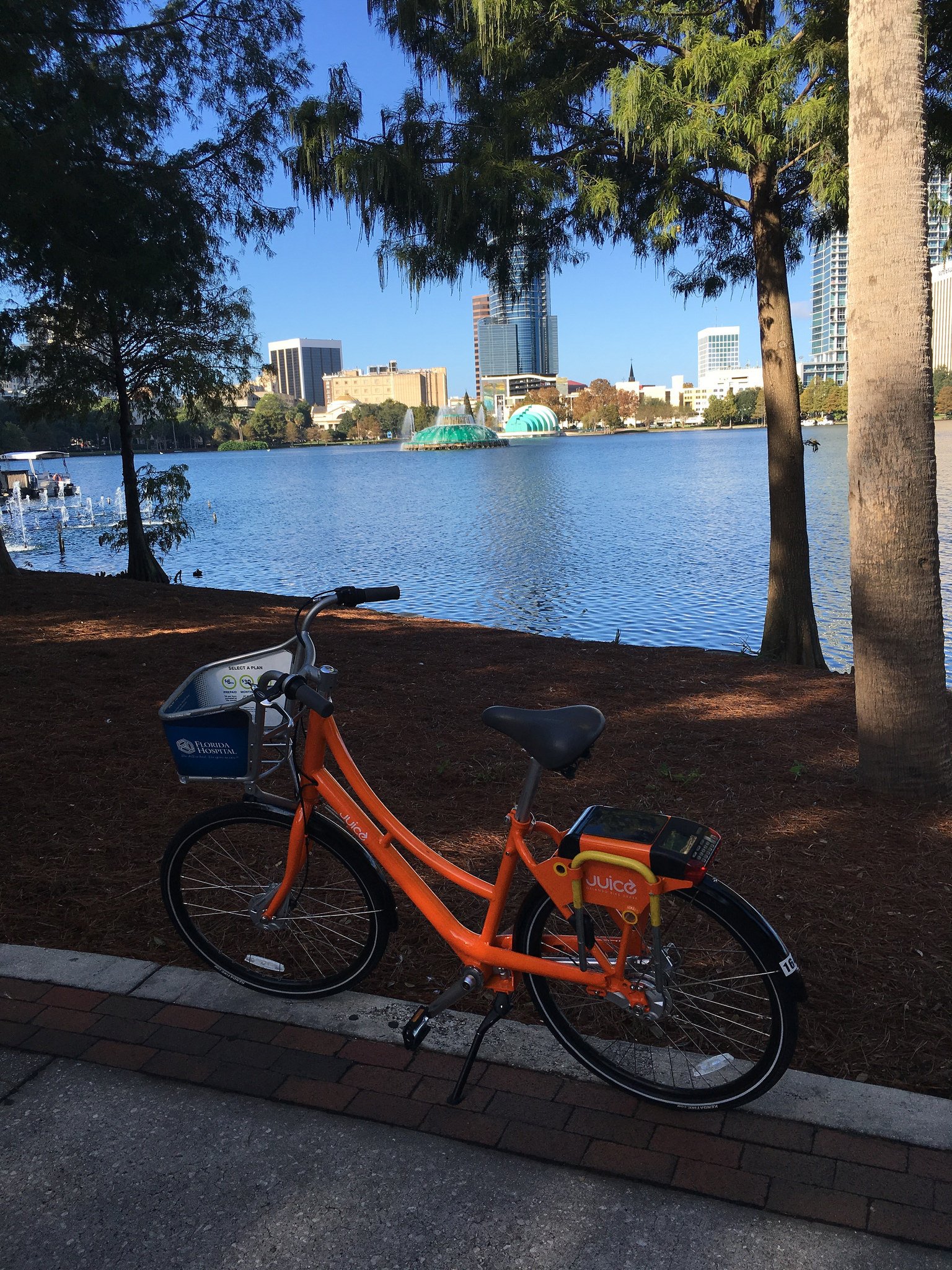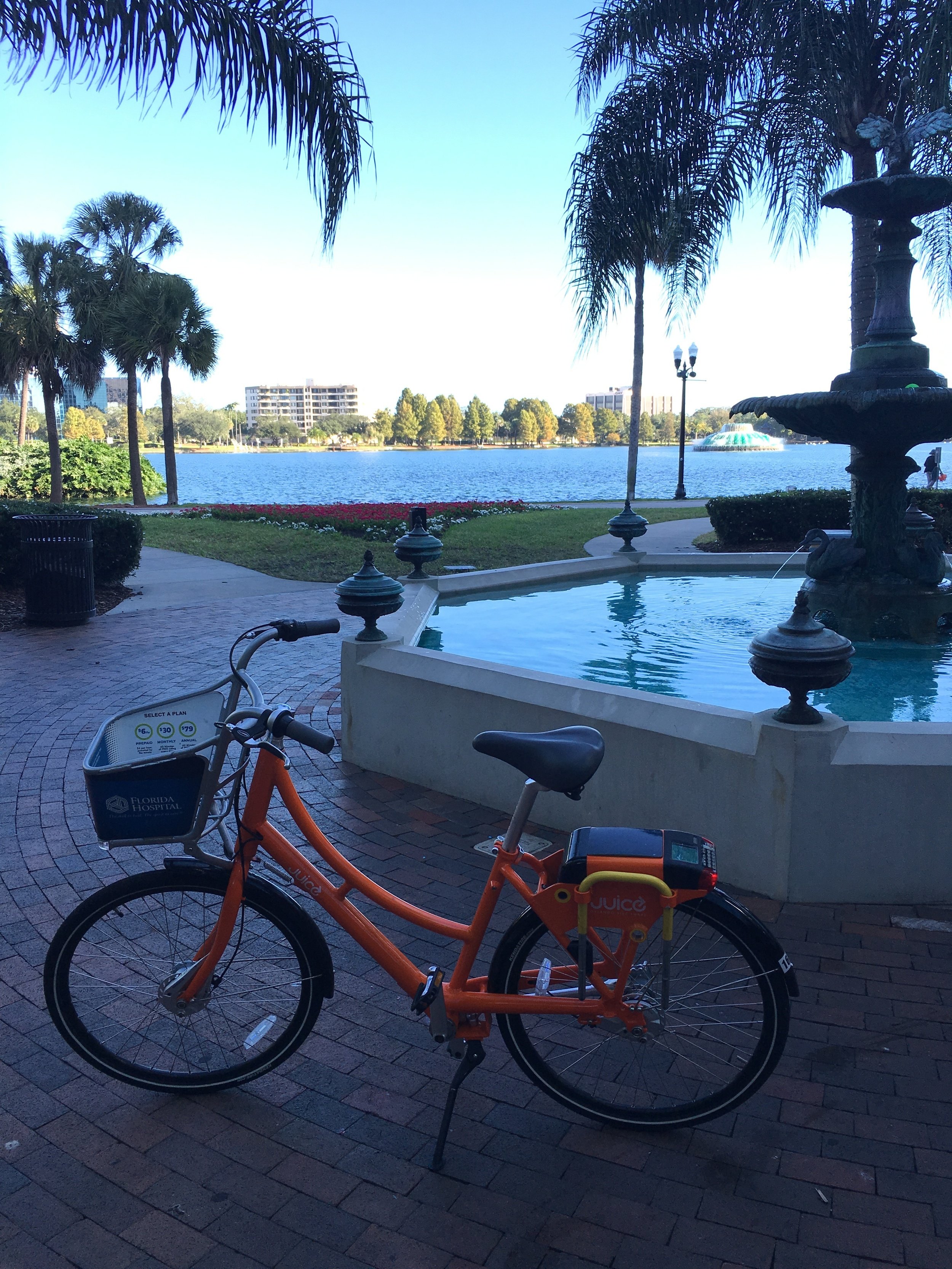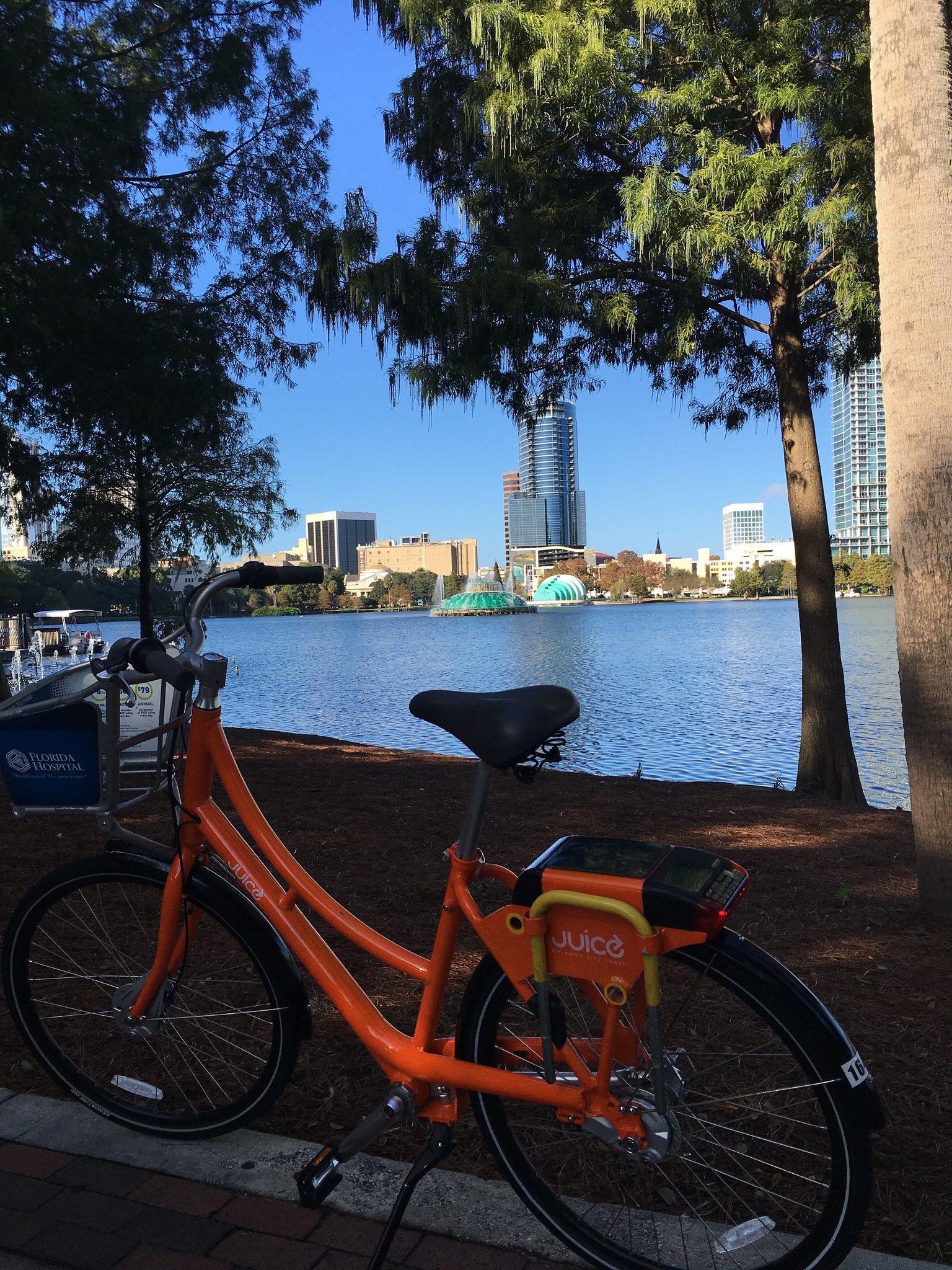TrIP 2: Postwar Trinity
My TrIP started with me reflecting on the landscape around my neighborhood. Audubon Park is undergoing a bit of a renaissance. This is especially intriguing as I recall Audubon Park was/is "near downtown" in real estate parlance. As I made my way to a bus stop near Maguire and Woodcock to head downtown, I realize that moniker described more than a physical location.
As the headline from The Day indicates, the area around Audubon Park is linked to a legacy of post-1945 development. Situated next to Baldwin Park, this area was closely aligned with suburbanization and Cold War politics that shaped the twentieth century. From 1940 to 1968 the land that would become Baldwin Park was an Army Air Corps and Air Force base. In 1968, the base became the Orlando Naval Training Center (ONTC). The ONTC trained thousands of sailors from 1968 to 1999 when the base closed.
Naval Training Center - Orlando, Florida. 1970. Black and White photoprint, 3 x 3 in. State Archives of Florida, Florida Memory <https://www.floridamemory.com/items/show/85048>,accessed December 23, 2015.
The base closure came as a shock, but the emergence of Baldwin Park as New Urbanist development suggested to some the postwar emphasis on suburbanization was in doubt. In reality, criticism of New Urbanism continues to highlight the persistent of the middle-class aspirations associated with home, car, and job. This trinity was formulated and culturally inscribed after WWII. The relief of defeating Germany and Japan was quickly replaced by a need to win the ideological and political contest against the Soviet Union. While the Cold War was hot in many ways, the domestic impact of Cold War sociopolitical thinking was to enshrine a consumptive republic that served to demonstrate the US experience equated to freedom and success (there were other things too). If you thinking about it, the postwar trinity: home, car, and job remain markers of freedom and success in American society. While achieving them should be considered an accomplishment, since it is expected, you must do more, you must excel at them.
As scholars such as Dianne Harris and Thomas Sugrue have demonstrated, the exclusion of racial minority from the suburban experience after WWII created a structure of inequality that continues to shape daily life. The government made this system possible through low interest loans for returning veterans and they in turn used that money to finance homes and education that propelled them into a middle-class lifestyle. This Mad Men America was created to serve broader political and social aims. The postwar trinity had symbols, associations, and actions every American recognized and the coercive power of that framework made "success" in the United States a very specific experience. Supported by government policy and reinforced by media representation, millions of Americans saw "hard work" and "good values" at the core of the national character and we never discuss the structures and process that made that way of life work.
The assumption of achievable success was both an individual and societal mantra. Arguably, the struggle to achieve that success has gotten harder and harder for Americans. Contemporary concerns about inequality represents the establish mythology breaking down as more and more Americans find themselves joining racial minorities, the poor, and gender minorities that never lived that dream.
As watch the landscape on my TrIP journey, I recognize it tells this story in many ways. Middle-class consumers were assumed to be living the two car household dream, as the classic Ford commercial above suggests, the bus service for the neighborhood speaks volumes about expectations. The bus system uses a "hub and spoke" design that assumes the riders want to go to the central business district. Service is more frequent Monday thru Friday immediately before and after traditional working hours. Weekend service reflect the leisure activities expected on Saturday and assumption of spiritual services (which tend to be neighborhood specific) on Sunday.
LYNX Station
Arriving downtown, I leave the LYNX station and make my way over to Juice Bike station using an iPhone app as a guide. On the way, I transition into contemporary urban development and design landscape that is attempting to update the expectations linked to the postwar trinity. Her, I see the impact of SunRail transforming life in downtown Orlando.
High Intensity Mixed-Use
The presence of SunRail in Central Florida has not addressed the complexity of the transportation challenge facing the region. I say this, but perhaps a more accurate statement is that SunRail is one part of a broader process attempting to address transportation concerns that represent shifting economic and social expectations. While the operating hours for SunRail do not align with low wage service workers, it does correspond to millennials searching for new professional and housing options. Thus, the juxtaposition of bus and rail in downtown Orlando says much about the evolution of postwar expectations. For more than a decade Orlando has attempted to create more residential living options downtown. Like many southern cities that grew with the automobile, Orlando's postwar growth drew people away from the city core for everything except work and governmental transactions. Countless southern cities have been described as ghost towns after 5:00pm for decades. Efforts to create event spaces using sports stadiums and other recreational spaces in downtown has had varying degrees of "success."
Orlando falls neatly into this pattern. For more than a decade the city has supported development projects. Success in the form of residential condos has created destination neighborhood around Lake Eola that serves as one benchmark of Orlando's urban identity. Indeed, if you see any visuals designed to described the city by the city, they tend to rely on the Lake Eola. At the same time, much of this residential narrative depends on presenting this local space in a manner that align with urban expectations of urbanism.
The Vue at Lake Eola
One new landmark for the Lake Eola area makes this idea clear. The Vue, located at 150 E. Robinson Street is high rise with an amazing view. The building's website proclaims it is a "Modern Classic Urban Community." One of the tallest buildings downtown, it informs your mental picture of Orlando. Yet, that slogan, "Modern Classic Urban Community" makes little sense. That is a little harsh, but understanding the Vue really rests on on single word in its slogan. It is URBAN. The other descriptors in the slogan are merely there to acknowledge consumer desire linked to cosmopolitan life. You are moving there to experience urbanity. This idea, that unique cultural and social activities are achieved in urban space is consistent desire in opposition to suburban life. You know the particular of this tension, I don't really need to spell them out.
Juice Bike Station
As I move from the LYNX station I slip into space created by this tension. I'm walking into alternative transportation option system that incorporates Juice Bike Share. This system represents an evolution of the postwar trinity and answer to a new consumer reality. Less suburban, housing options such as the VUE and other residential developments downtown rely on services like this one. This is a chicken and the egg process. Without people living downtown, you don't get bike share. On the other hand, are there enough people living downtown to force the physical landscape to allow bikes to become a viable transportation option for everyday life?
SunRail is latest stepping stone in the residential push, but the promise of urban experience is defined by high density city life found in places like New York or Chicago. This push matters most for millennials who increasingly want to avoid the hassle (and cost) associated with car travel. Choice is key here. While countless poor people may employ a bike as a means of transportation, the reality of bike share services like Juice is that they are catering to riders looking for an alternative to the car they likely own, but don't want to use for social, political, or economic reasons. This is a generalization, but it worth discussing. Opting out of car culture and embracing a different set of sociopolitical benchmark represent a challenge to postwar expectation driven by generational perspective.
My Juice Bike Share rental.
As I rented by Juice Bike, I recognized how much its placement and my use spoke to these shifting expectations. I walked a short distance from the bus station, but I was a socioeconomic world away. I needed smartphone to use the app to find the station. I needed a credit card to create an account to recent the bike, and my ride itself was influenced by previous consumptive development.
My ride took me from Orange Avenue down to Lake Eola. In part, a decision made easier by the bike lanes that made for easy navigation. As I rode along I realized how much those paths made me feel safer as a rider, but I also realized how much I was fulfilling the consumptive dream linked to downtown development. While there has been and will continue to be friction around bike use, my TrIP avoided that reality. Traveling on a Saturday, I avoided the "hipster" hate associated with bikers in the public sphere during the work week. The socially inscribed narrative I was engaged with spoke to the kind of infill development that are transforming city centers. Whether labelled gentrification or displacement or something else, the class driven dynamic shaping perception is undeniable. Postwar consumptive ideas linked to the car are flatten and extended to bike and rail experience. If you can afford this alternative, you can live in the right place, use rail and bike service and only brave automobile travel when you need to do it.
Colonial and Maguire
Walking home
This realization was made clearer by my return trip. I returned by Juice Bike to its station and caught the bus back home. Staring at the intersection, I wondering about biking on Colonial and reality of its dangers. When I see people doing it, they don't have a choice.
My TrIP was bit of a historical reflection on urban development. I can read the spaces around Orlando in light of broader concerns linked to urbanization. Transportation acts as a kind of signal of broader expectations. TrIP gives its participants a chance to pause and consider the implications of the system we are in. For me, the idea that the postwar trinity persists is clear. Yet, in many ways our contemporary debates are just beginning to deal with the painful implications of what it will means to undo that world and create a something new.













